The recently created “Augmented Play” area needed to create more iterations on the “HeroVision” Platform. Herovision is a Mixed Reality experience, a toy product with a physical and a digital component. The larger R&D team already have "Transformers" and "Marvel Ironman" Herovisions product on the market, and the natural progression would be to go to a second phase where the platform extends to other intellectual properties.
Our small but quick design development team was composed of 5 people which different backgrounds and skills: engineering, product design, 3d artist, interaction design, game development between other talents.
The physical components of the Herovision platform have the following parts:
1 x binocular headset where a mobile phone will be inserted
3 x cardboard printed floor markers
1 x Hand gauntlet with small markers
1 x Plastic Mask that contains the binocular headset, which can be used independently as a role play item.
The technology used on this product: "image tracking" using the mobile devices capability for processing computer vision algorithms with ARCore (android) and Arkit (iOS) respectively. The image tracking tech lets you attach digital content to a physical image as it moves around in the camera view. It's great for putting 3D content onto posters, business cards, flyers, etc. The 3D content will be displayed on the mobile devices which will be used in front of the face as a binocular stereoscope. The software package can detect and track content to a target image.

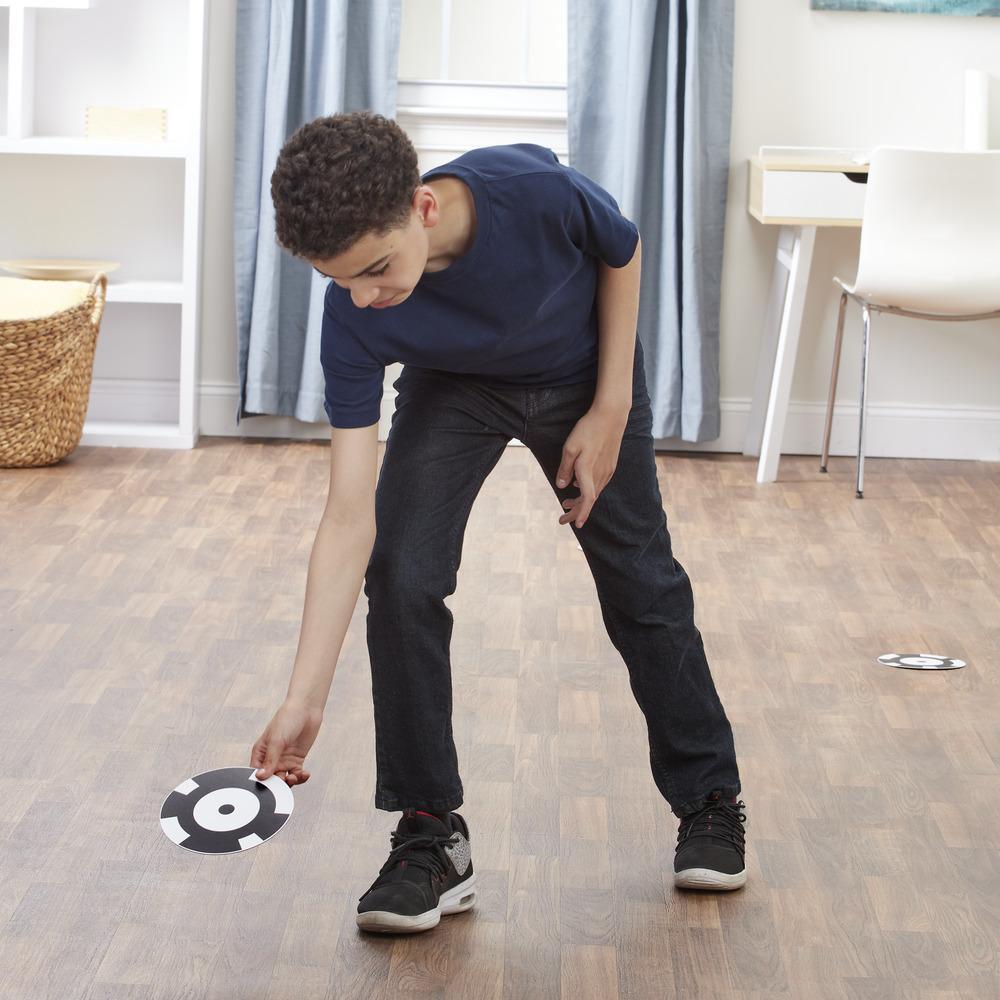
Our group designed and created prototypes with different types of interactions that reflected the different hand gestures from various hero characters. If it’s "The Hulk", then the player needs to “smash”, if it’s "Spiderman", the user needs to flick the hand to web sling, if it’s "Red Power Ranger", then the user needs to use a blaster and the communicator; if it is "Ghostbusters", then the use Neutron wand.
My role on these prototypes was to lead the interactive design and production of projects like "Spiderman", "Power Rangers", "Ghostbusters" and "My Little Pony".
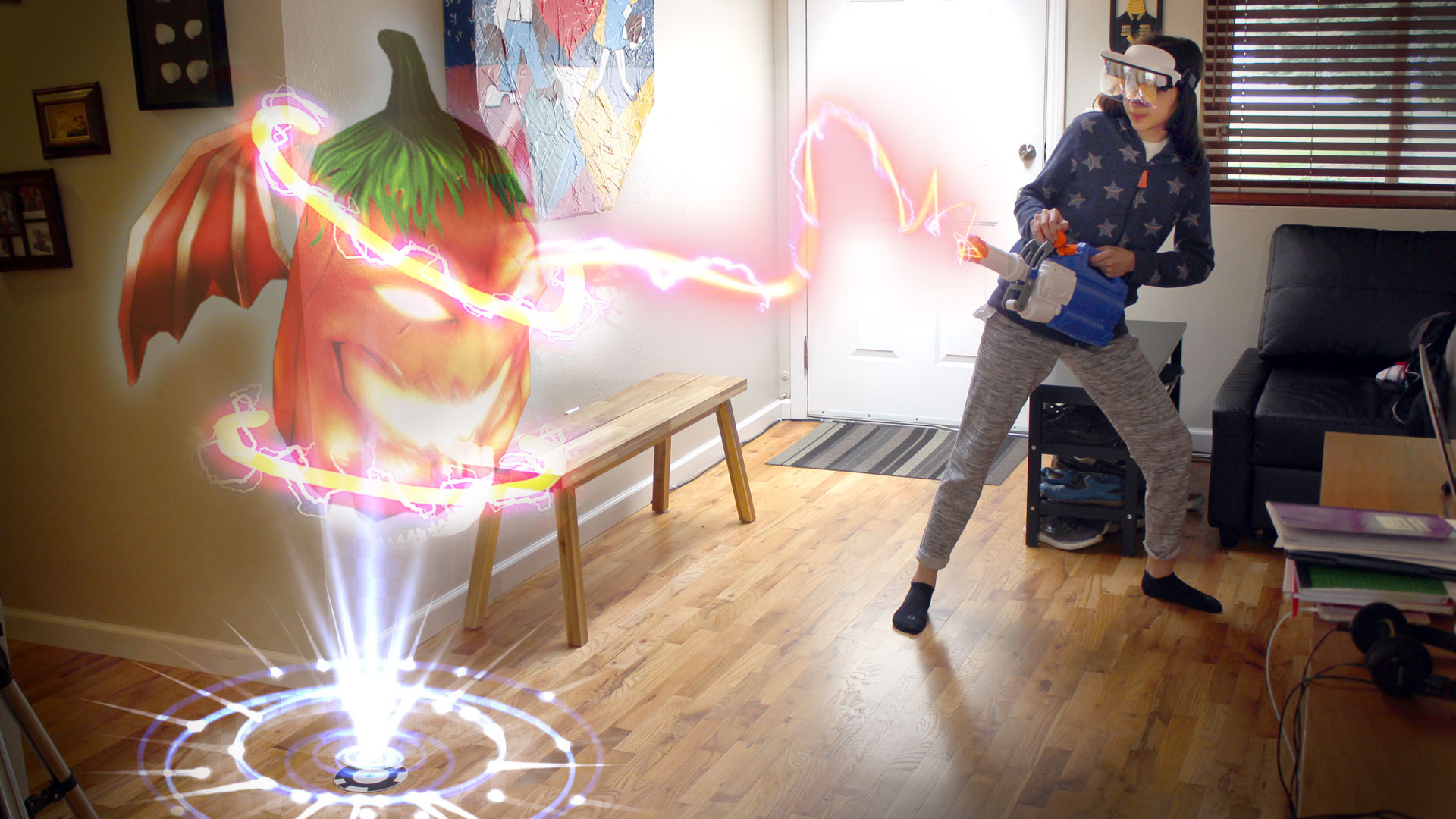
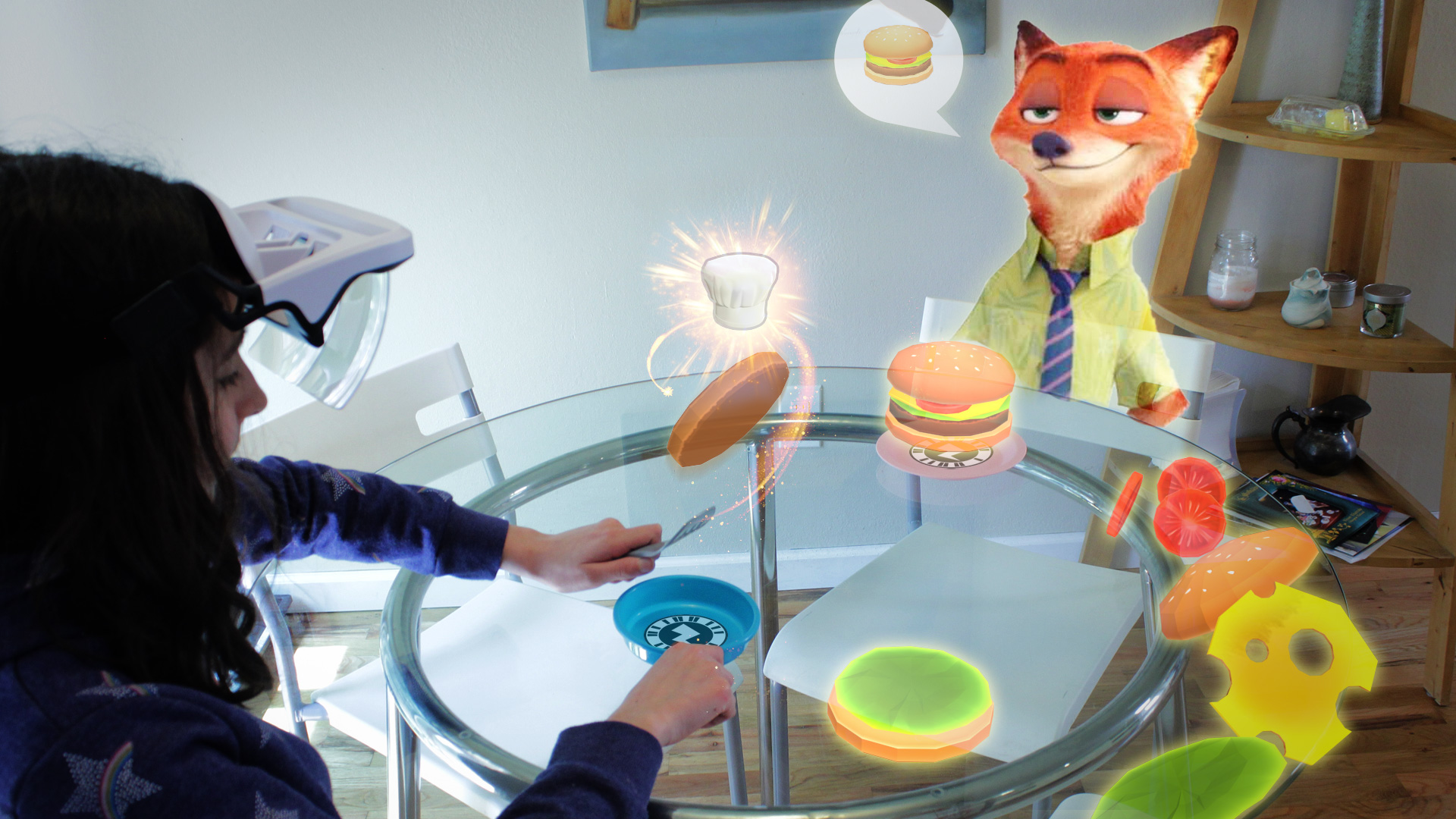
Every two week (sprints) the team were delivering a result, we do a group analysis of the delivery, and we decided if we want to refine some specific details.
BRAINSTORMING
We worked with the group making some quick sketching; we talked about what is the "Power Rangers" IP and what it represents; we picked 4 or 5 ideas we thought fit with the Power Ranger storyline and lore, focusing on the actions and hand gestures of the hero character. Since the technology allows for 6 DOF (degrees of freedom) on the hand markers recognition. We debated about the feasibility of some of the ideas, but I also wanted to push the envelope with some of the interactions since we knew we could do quick prototypes in Unity to proof the tech possibilities.
-Initial rough Sketching
-Criteria selection (matrix)
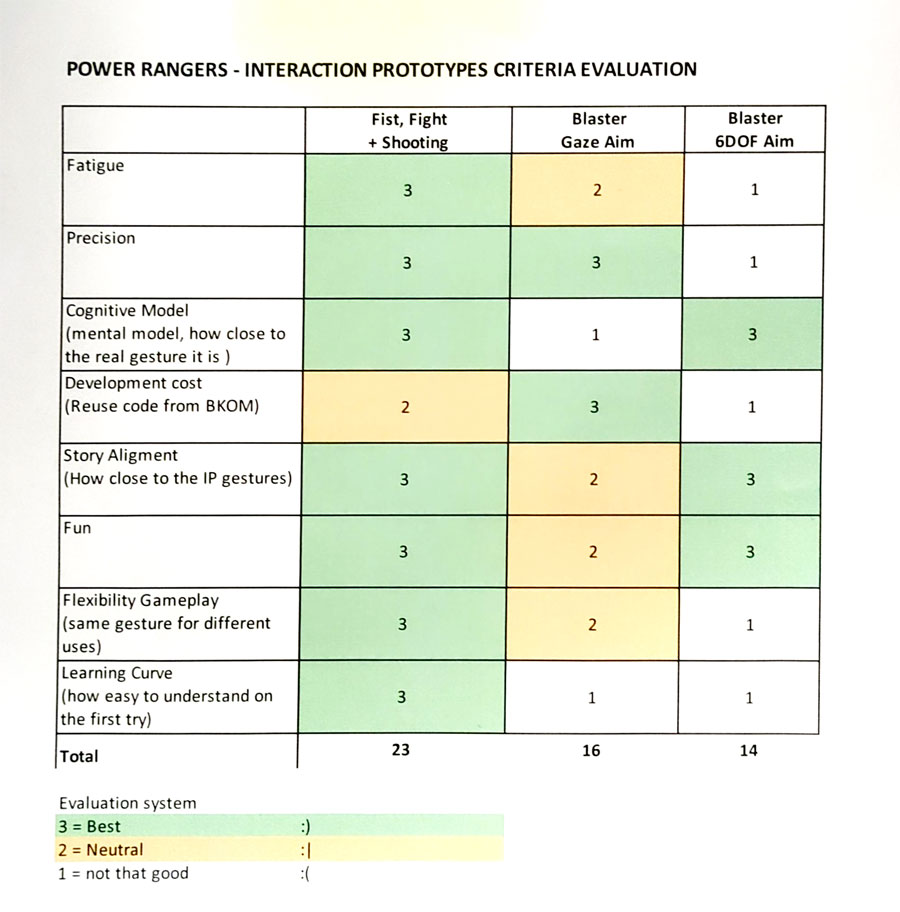
We provided input and some quick sketches shaping some ideas from the groupand posting them on a whiteboard for group selection.
We selected the Red Ranger character to be the role to be played by theplayer (the kid), because is one of the kid’s favorite rangers of theseries and has several hand gestures and gadgets that allow us to play with.
Five main features or "beats" were picked from the brainstorming sessions in order of priority:
STORYBOARDING
With these 5 “beats” selected, we started to put together in a story line the main keyframes of the experience, mixing the 5 ideas or “beats” as keyframes and unifying the sketches with one same style. Always focusing on the Power ranger Lore, the Red Ranger character and his actions and specially hand gestures. The storyboard is done in photoshop, photo bashing with pictures, 3D models and hand drawing. In some other cases these storyboards can be done also with quick pics of us recreating poses.

Other documentation in this stage that would be useful, what we didn't need to create since this was a quick sprint to probe the concept and the technology:
RAPID PROTOTYPING
While refining the storyboard, the software engineer started to create “gray box” prototypes (interactive prototypes with boxes that represent the future refined 3D assets) in Unity3D engine for each “beat” or keyframe. We used iOS and android as the platform to develop some of this mini prototypes. Also, deploying the prototype into a mobile phone and test it with a kit-bashed Google Dream headset for android or a Herovision headset. I helped developed in Unity some of the beats (Megazord, Zord Size, VR city) since I’m also hands-on with game engines..
One particular “beat” required voice recognition, the engineer tested several plugins for it; It worked decently at the end, but we noticed that external noises could interfere with the interactions; also, other additional unexpected factors affecting the immersion experience appeared like accents and diction form different countries.
Here are some screens related to the final Beats
Click on the images to make them bigger
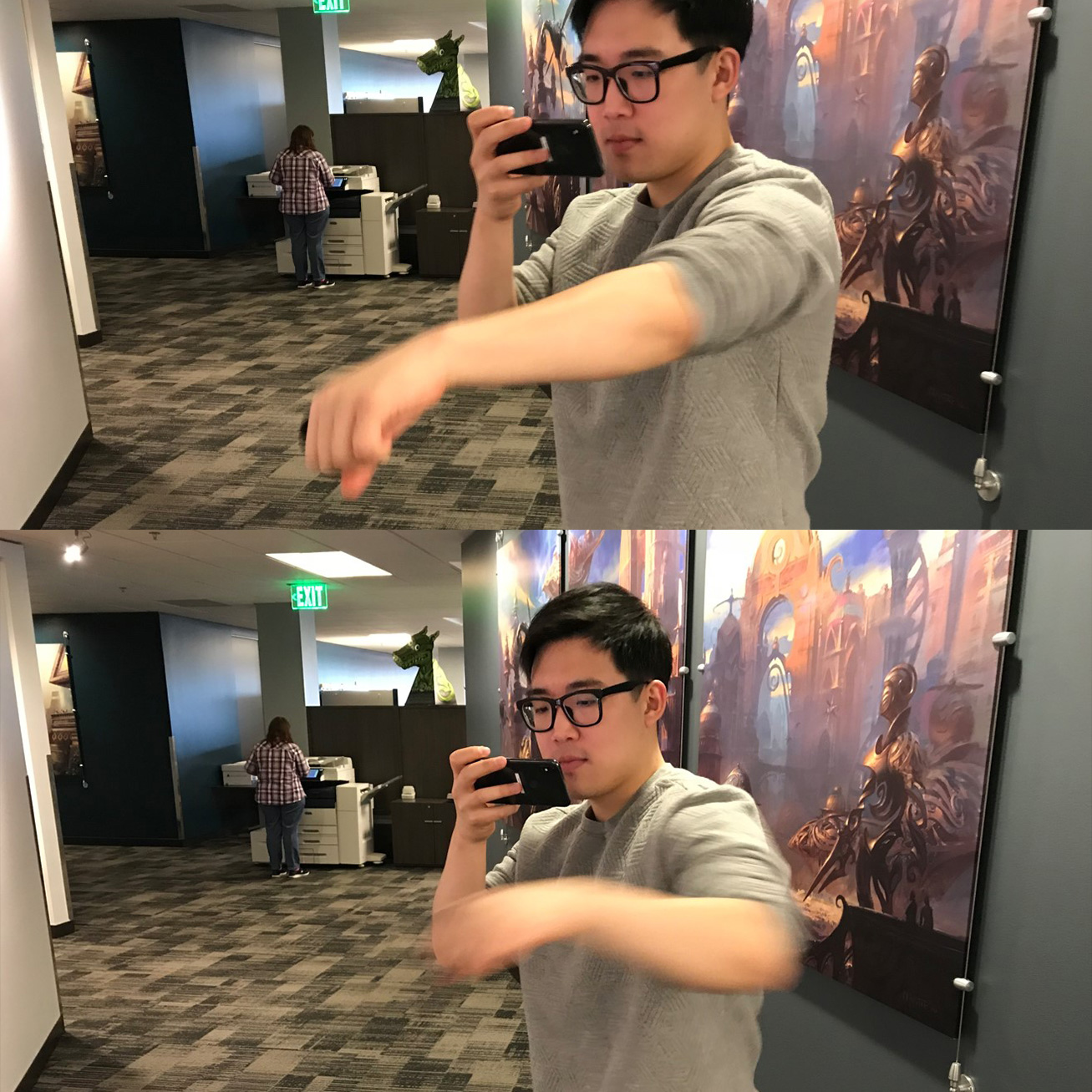
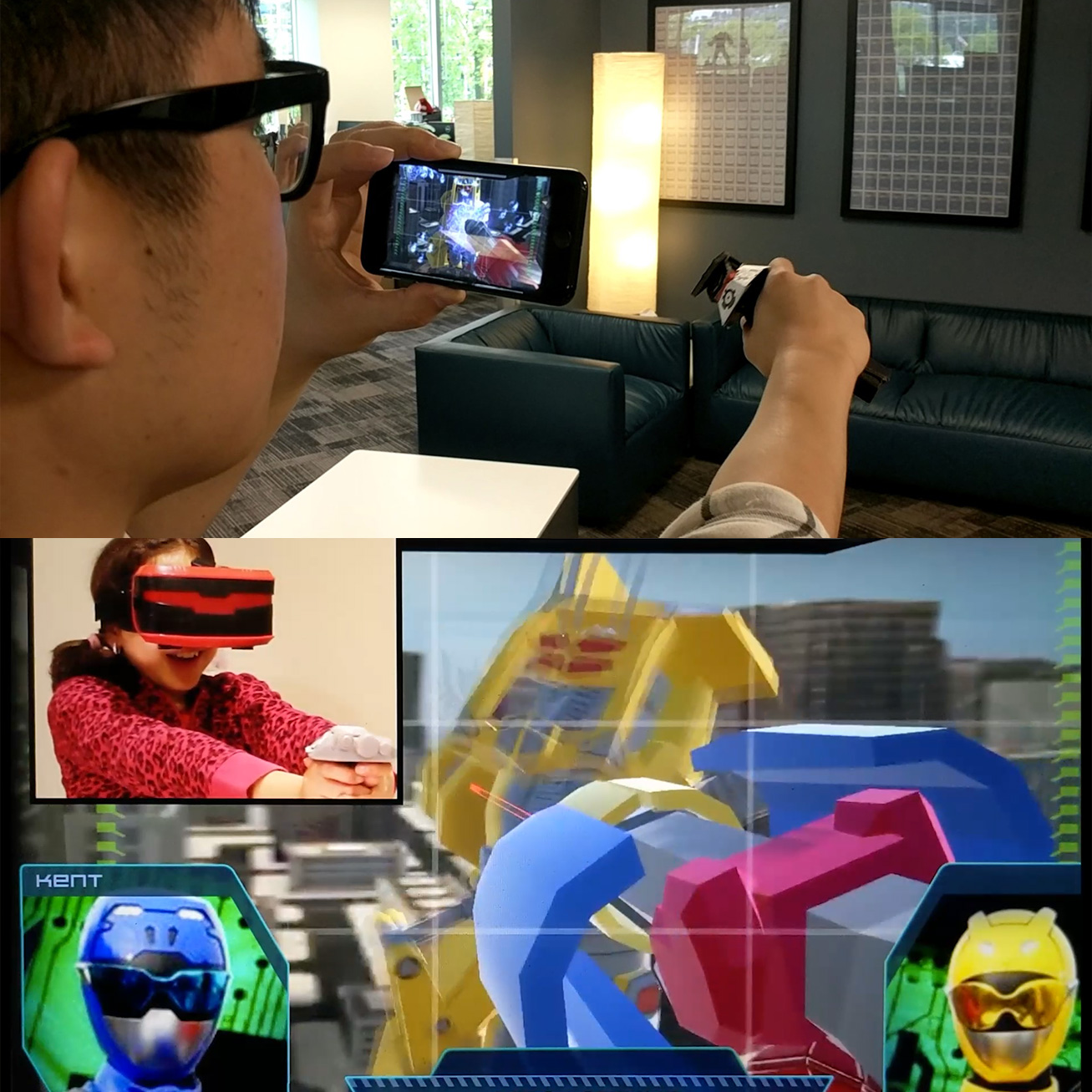
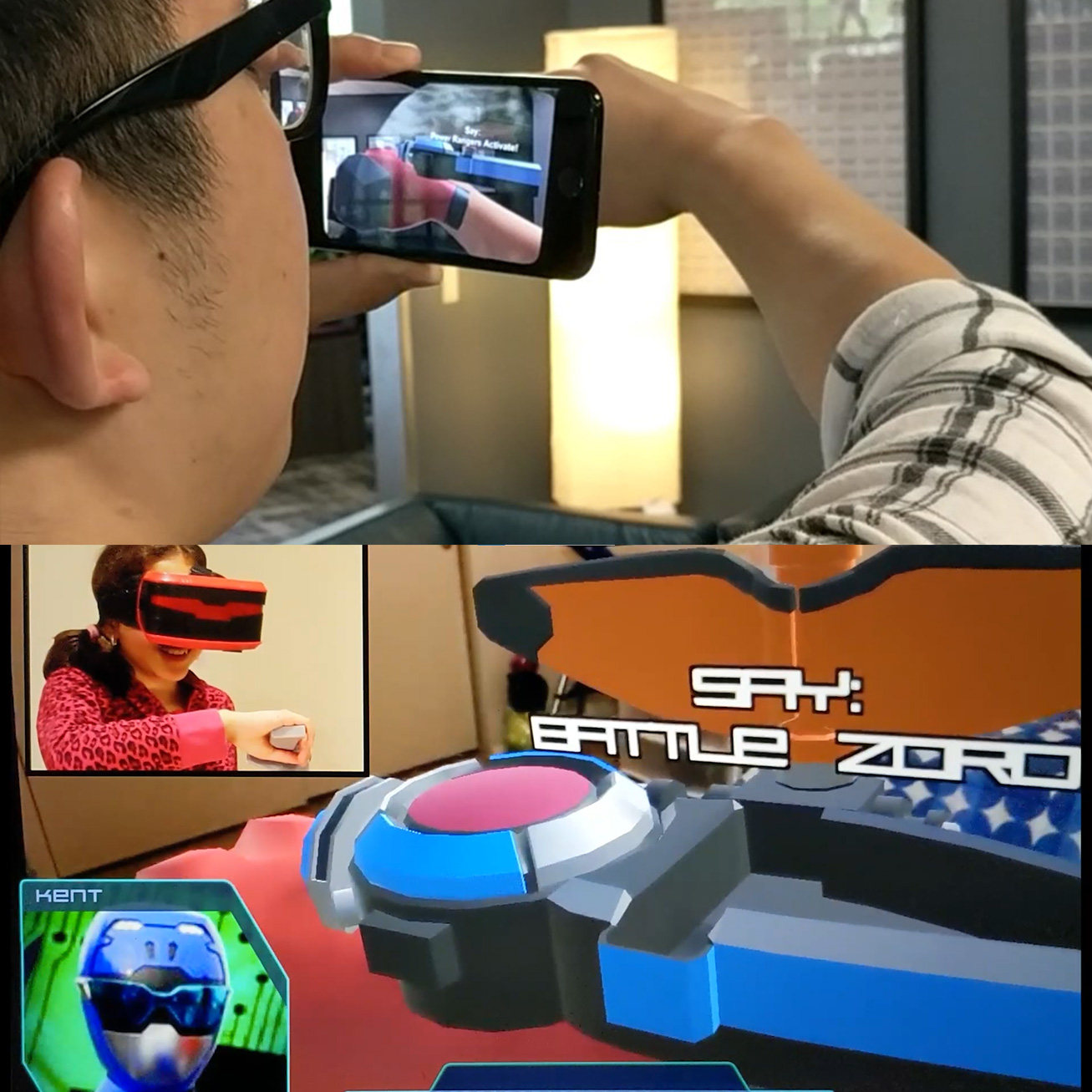

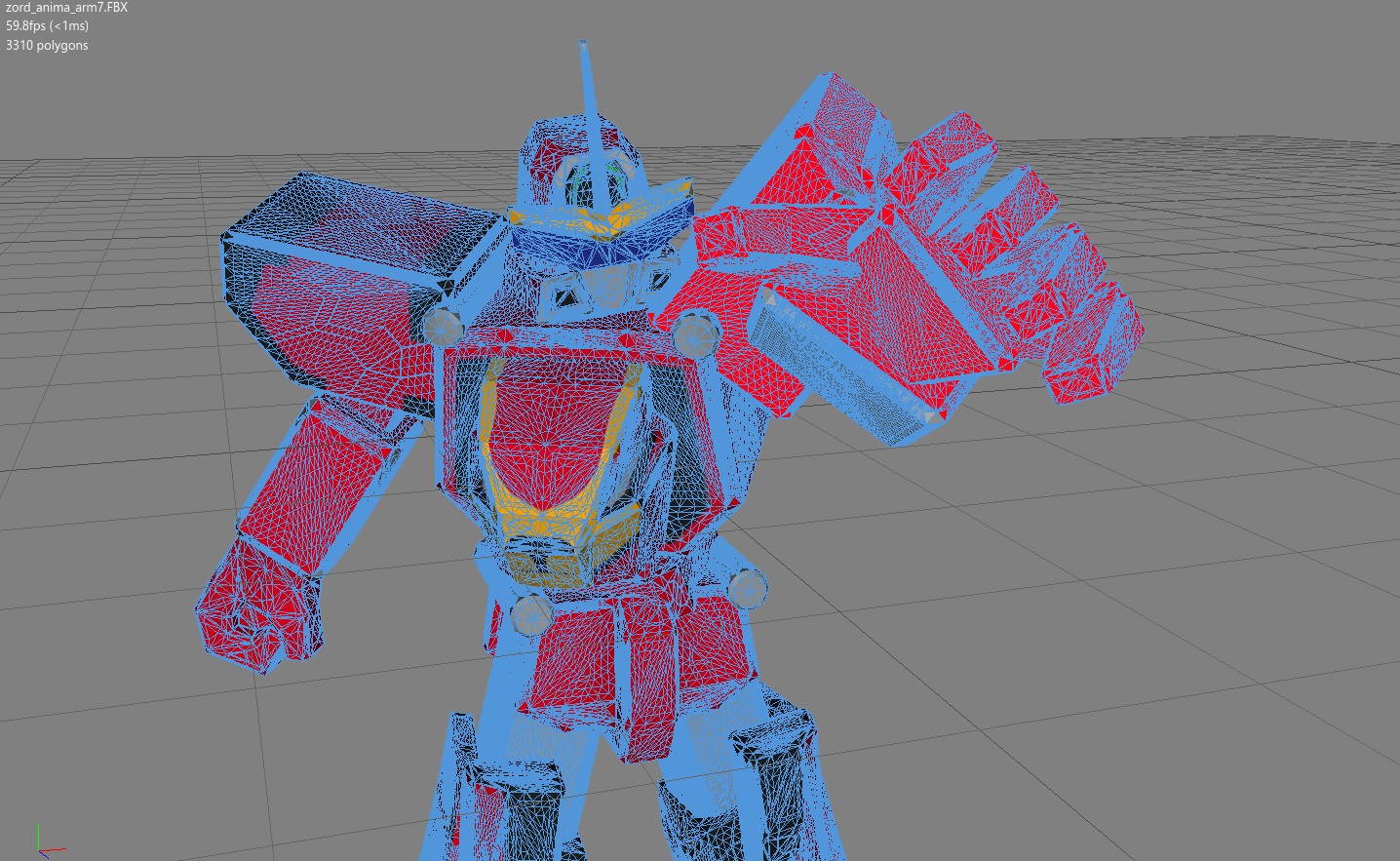
PROJECT MANAGING
I coordinated the deliveries and presented them to the product director using spreadsheets and a whiteboard, with weekly schedule to have control of the deliveries (art, mini prototypes, storyboarding, reviews). Every day we had a 10 min morning stand-up meeting with the group in order to keep the control of the deliveries, where each person explain briefly what they are going to work on that day; this includes staying on top of the interns timing, since their support was only temporal, like the case of the 3D artist.

One Line Concept
Presenting the pitch of the project was part of my role and it was a learning path since the process was new to me; I put together the user experience portion and the following parts:
Here are some screens related to the final Beats
Click on the images to make them bigger
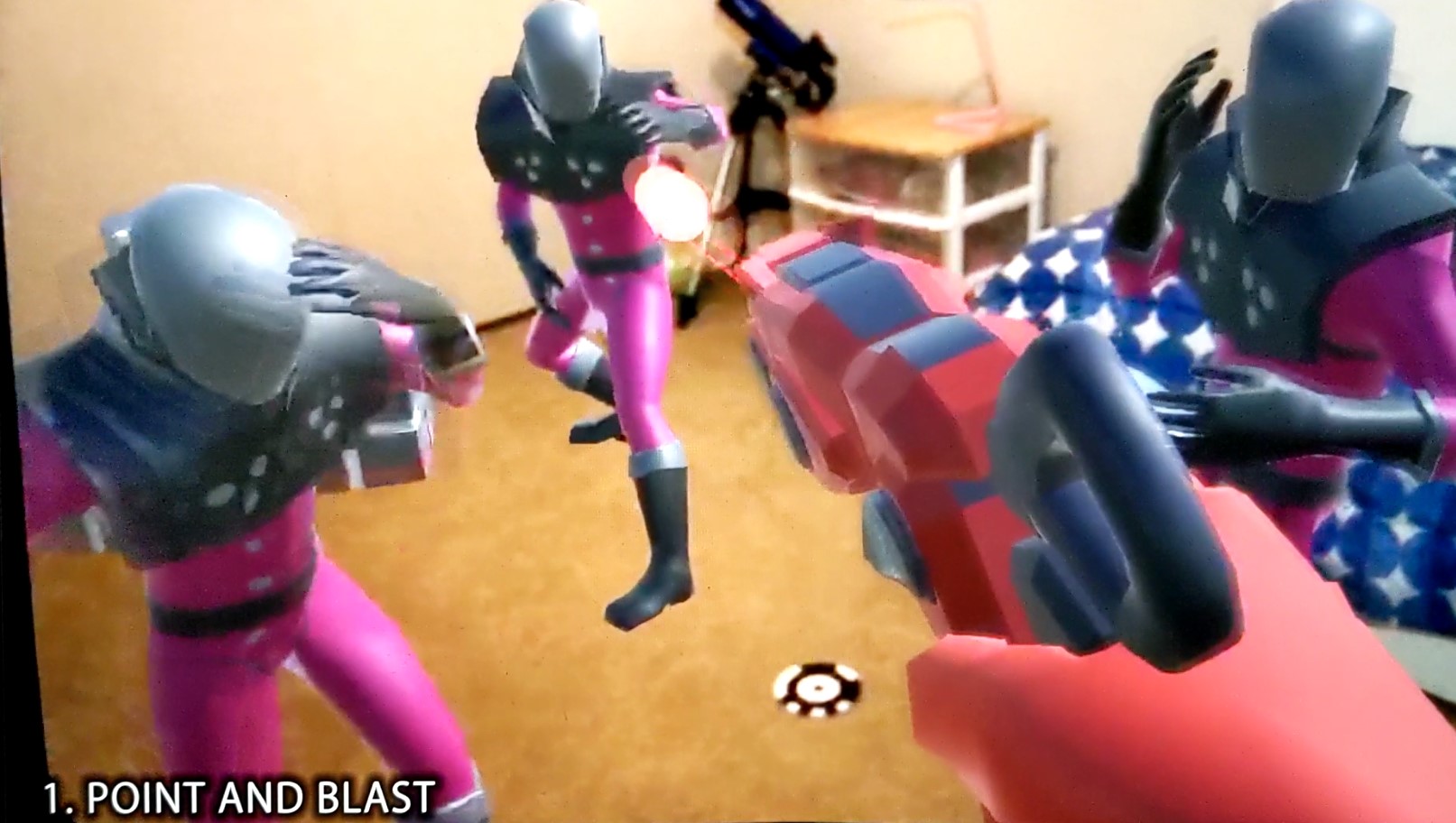
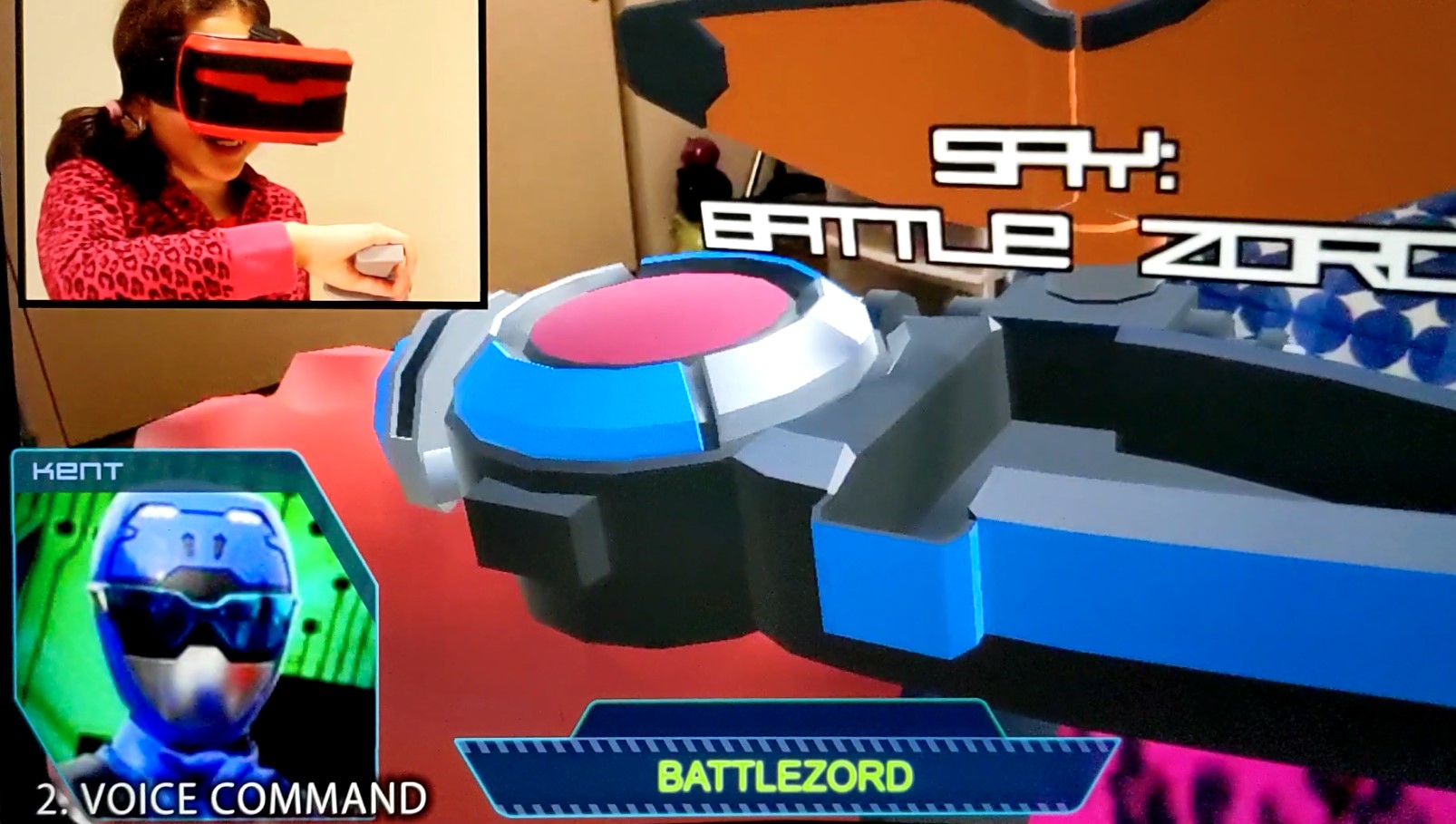
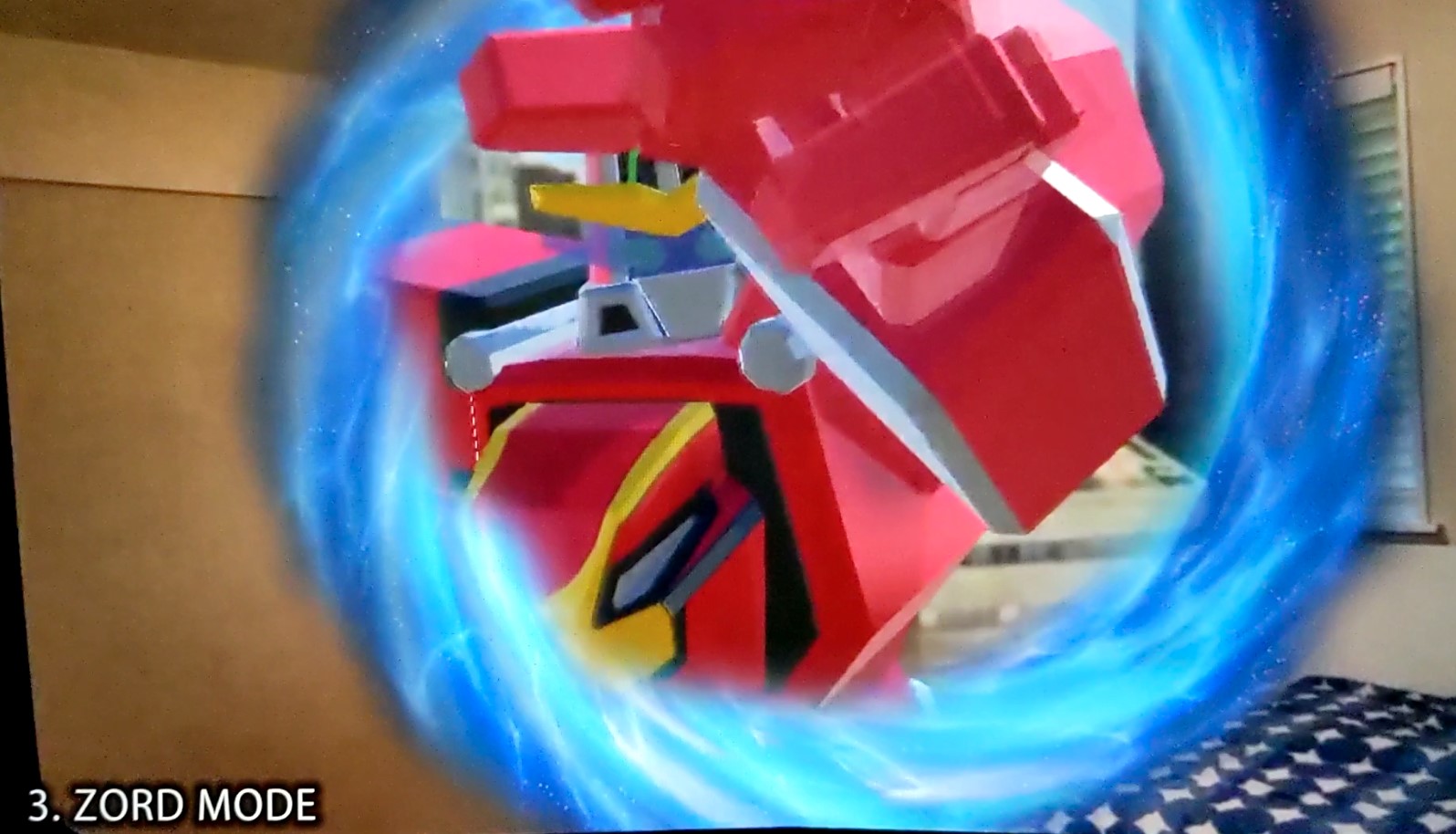
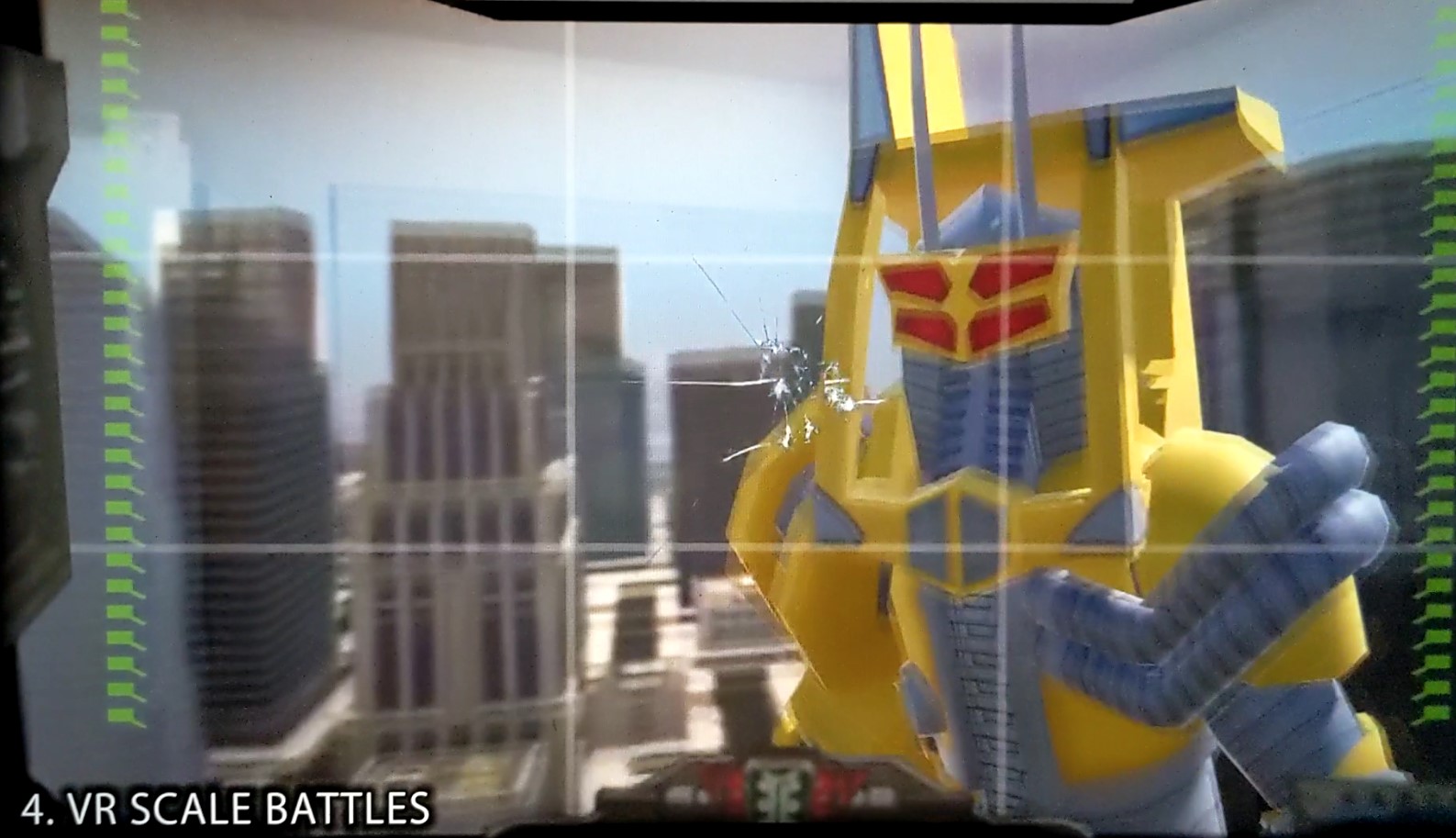
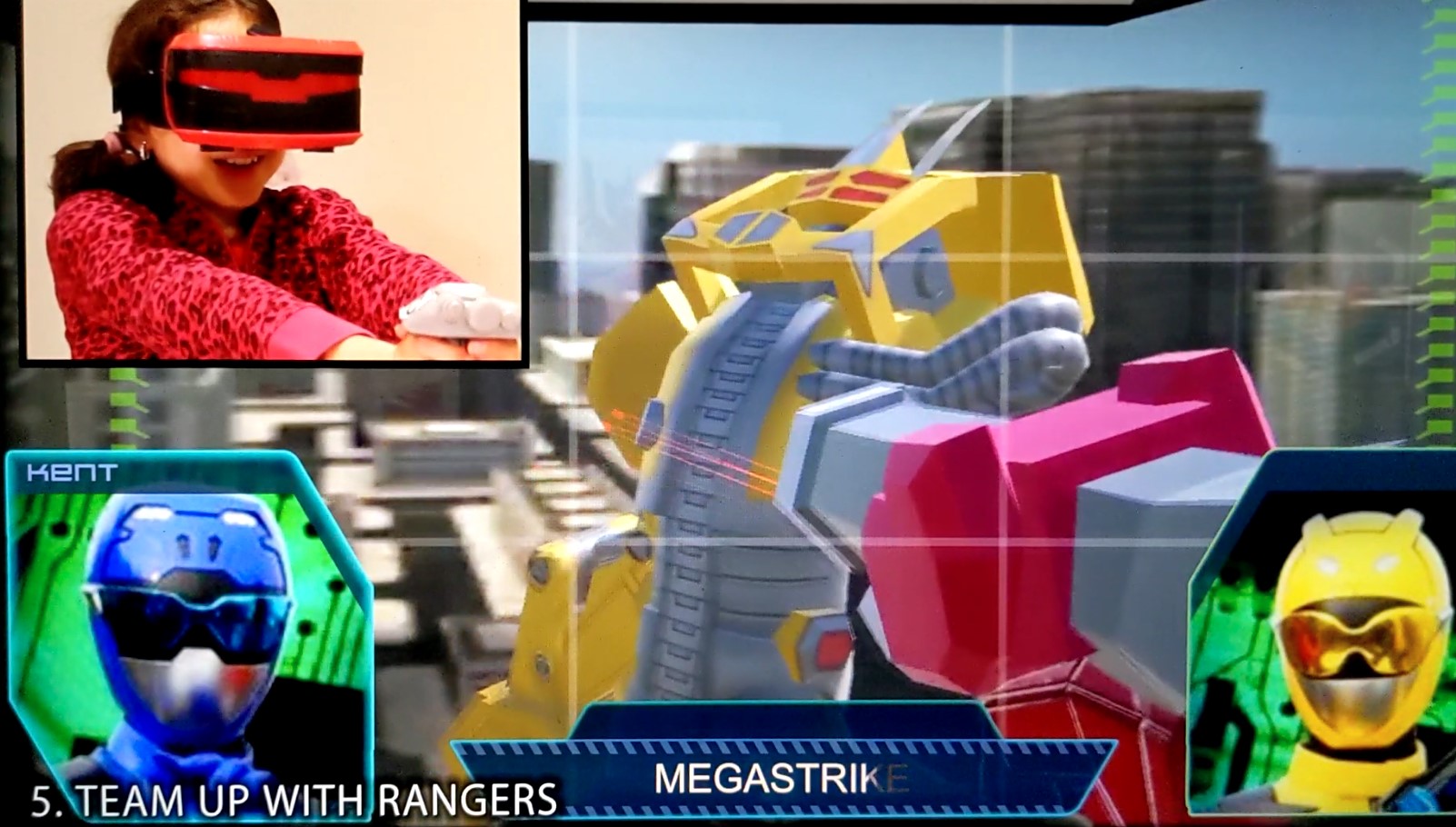
USER TESTING
User Testing would be the next phase, we didn’t reach this point for this project.
The user testing would confirm the “Proof of a Fun” product, where the players (kids) will test directly the prototype sequence, which at this point is basically a “gameplay on rails”.
Another User test to perform would be the “Proof of Tech” where we will test inputs like voice recognition or the trigger gauntlet.
A “Focus Group” also could be scheduled at that time in order to start validating earlier the market appetite. We have some previous insights from the first generation of Herovisions which helped us start refining product details, like the resizing the mask headset.
In conclusion, this project allowed us to proof the concept and the technology, achieving an engaging content for the kids, with an immersive experience, within a product price range required. Personally, it was a great learning experience working with a multidisciplinary creative team, leading the digital product and the pitch, appreciating the skill of every person and creating camaraderie.